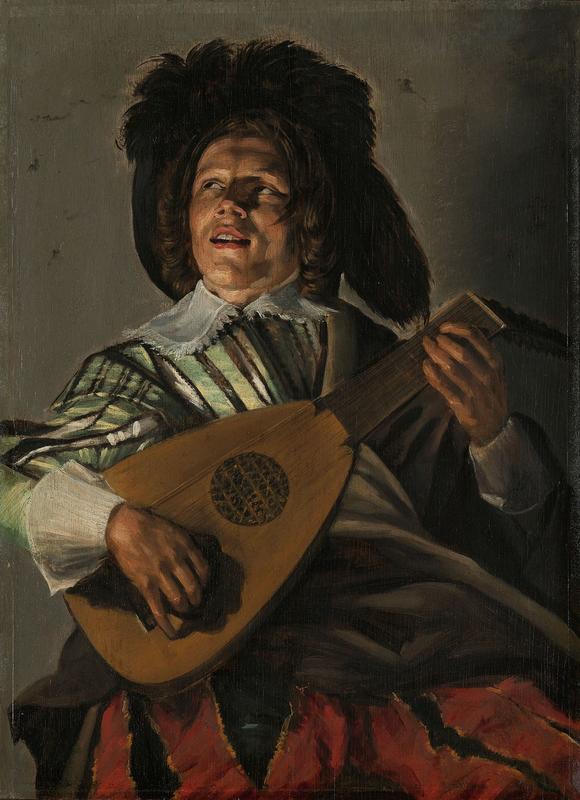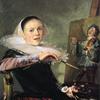More about The Serenade

Contributor
Judith Leyster's The Serenade is a favorite jumping-off point for scholars to make wild guesses about the artist's early employment and the development of her style.
She made it when she was twenty years old. If that doesn't make you feel a little sheepish, you must be quite the child prodigy. It's possible that she was completely independent and self-taught, because documentation of her life is vague, but many scholars suggest that she was an apprentice in the workshop of another artist, given that her work seems to use and improve upon the light-filled techniques of Rome, brought back to the Netherlands by van Honthorst. She was also the only woman in the local painters' guild. A guild is an organization of professionals, often artists, which provides support to members and vouches for their work to the public. We only know of about twenty works of hers; if there had been a women's guild, we would have more.
If Leyster was an apprentice, that could have provided the reason for her signing the works: apprentices were allowed to take personal credit, thanks to the warmth of the big name they worked under. Whether or not she was an apprentice, she understood the principles of good branding, and made sure to affix her monogram, featuring an image of a star, to these early works. Her last name means "guiding star" or "North star," so, centuries before the Warhola family came to the U.S., Leyster had already made herself a Superstar. Leyster did not come from a family of professional artists: her father was a brewer and clothmaker.
Seven years after this painting, it seems that peer pressure compelled Leyster to marry a financially successful but tacky artist whose work has none of the brilliance and insight of hers. She bore children and maintained the household, and her works afterward show her divided attention. Like many, if not most, great women artists, Leyster was completely neglected by "scholars" for over two centuries, until somebody recognized her unusual starry monogram, with a large J and a small l, on a painting which "experts" said was the work of Frans Hals. As a college student, the Leyster scholar Carolyn Korsmeyer, at the time unaware of Leyster, saw The Serenade. She examined the caption to see the painter's name. She writes, "'Oh, that's interesting,' I thought. 'In Dutch "Judith" must be a man's name.'"
Sources
- Hofrichter, Frima Fox. Judith Leyster: a woman painter in Holland's Golden Age. Doornspijk, The Netherlands: Davaco, 1989.
- Kirsh, Andrea. Seeing Through Paintings: Physical Examination in Art Historical Studies. New Haven: Yale University Press, 2002.
- Korsmeyer, Carolyn. Gender and Aesthetics: An Introduction. London: Routledge, 2004.
- Quinn, Bridget. Broad Strokes: 15 Women Who Made Art and Made History (in That Order). San Francisco, Chronicle Books, 2017.
- Schjeldahl, Peter. Hot, Cold, Heavy, Light, 100 Art Writings 1988-2018. New York: Abrams, 2019.
- Sperling, Jutta Gisela. Roman Charity: Queer Lactations in Early Modern Visual Culture. Bielefeld, Germany: transcript Verlag, 2016.
- Weller, Dennis P. Jan Miense Molenaer: Painter of the Dutch Golden Age. New York: Hudson Hills, 2002.
Featured Content
Here is what Wikipedia says about Serenade (Leyster)
The Serenade is a 1629 oil painting by Judith Leyster in the collection of the Rijksmuseum. It was attributed for centuries to Frans Hals until Wilhelm von Bode saw it in the Six collection in 1883. He noticed the prominent "J" in the signature, and attributed it to Jan Hals. This is one of seven paintings first properly attributed to Leyster by Hofstede de Groot ten years later in 1893.
Check out the full Wikipedia article about Serenade (Leyster)













I like this photo because it uses a nice shadow effect on the face to add a lot of detail. I also like how the artist allowed a lot of the culture to be shown in the painting through the clothing.